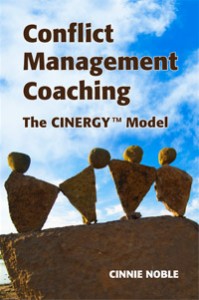The Sweet & Sour Sauce of Integrative Communication
The topic of today’s Communication Lab experiment is Sweet & Sour. You may have tasted a sweet and sour sauce, often used in Chinese cuisine to go with fish or meat. The intriguing part about Sweet & Sour is that it combines very different and somewhat opposing flavors to create a new, balanced flavor. We are going to take this concept of Sweet & Sour and apply it to our communication.
Video link: http://youtu.be/pWPw7jbUk9I
Have you ever felt stuck or pulled in different directions by an internal struggle because you had conflicting thoughts in your head? Today we will learn about integrative thinking, which is similar to the concept of Sweet & Sour. You will pick up a communication technique that will help you transform conflicting ideas into creative solutions.
In his book “The Opposable Mind: How Successful Leaders Win Through Integrative Thinking,” Roger Martin defines integrative thinking as:
“The ability to face constructively the tension of opposing ideas and, instead of choosing one at the expense of the other, generate a creative resolution of the tension in the form of a new idea that contains elements of the opposing ideas but is superior to each.”
The expression that often indicates the presence of conflicting thoughts is “Yes… but…” . For example, you know you should do something, but you can see many obstacles on your way that keep you stuck. Instead of a clear “No, nope, nowhere, nohow,’” you offer a tacit “YOPE’” – “yes” and “nope” in one. This “YOPE” thinking is a protective strategy to minimize uncertainty or the risk of failure. YOPE gives no hope.
Turn “Yes… but…” into “Yes…and…so…”
Instead, let’s play a language game to get at the core of the issues.
Example: A client of mine may say, “I need to give this person an honest feedback, but she will get upset and won’t listen.”
This is the cautious YOPE response that doesn’t encourage action.
The trick is to change the ‘yes…but…’ response to ‘yes…and…so…’.
Example: “I need to give this person an honest feedback, and she will get upset and won’t listen, so…”
After ‘so’ is where the secret Sweet & Sour sauce comes in. The person has to come up with the next proposition, assuming the first two are true. This can either boost some creative thinking or reveal limiting beliefs and barriers.
Examples:
“I need to give this person an honest feedback, and she will get upset and won’t listen, so…”
- “I have to prepare for this conversation more deliberately”
- “I have to control my own responses better”
- “we have to choose the best time and place possible for this conversation”
- “I need to acknowledge how she feels first”
- “I have to avoid making the issue personal and give a lot of support”
- “we should brainstorm solutions together”
When you play with the language like that, it may illuminate some fallacies and inconsistencies in your thinking and prompt more creative responses.















